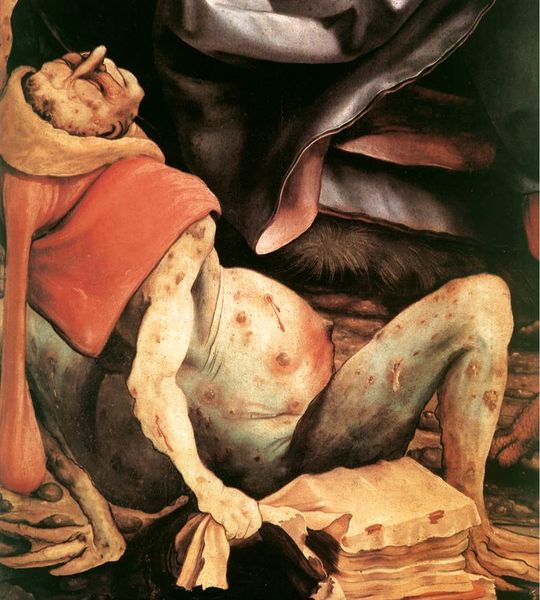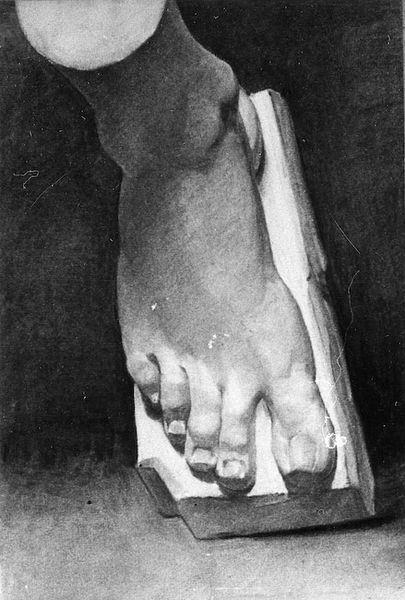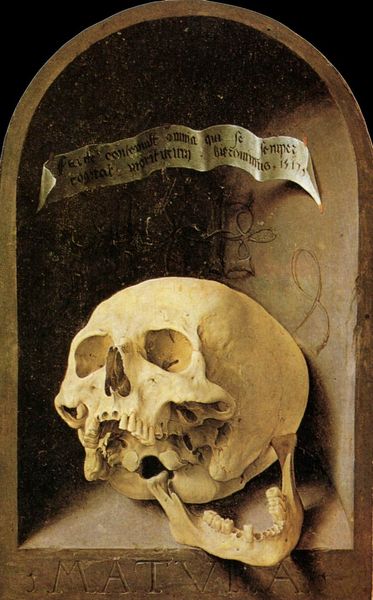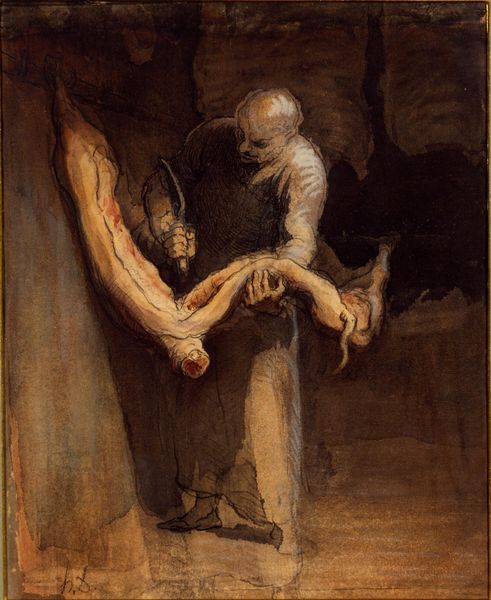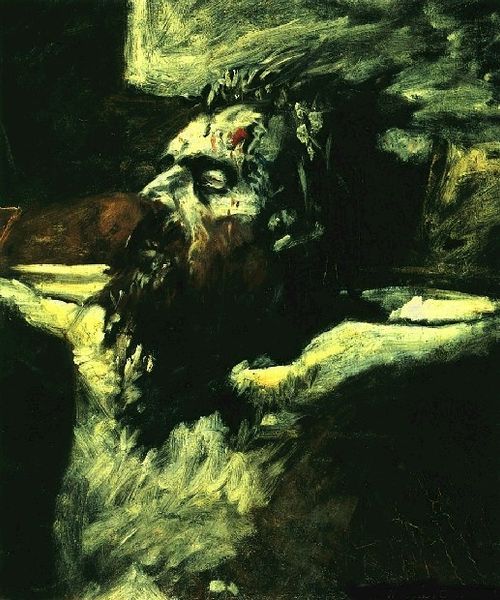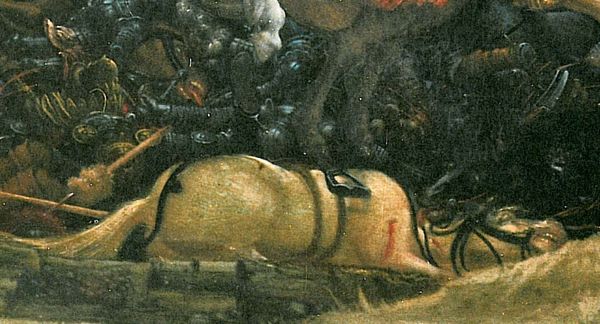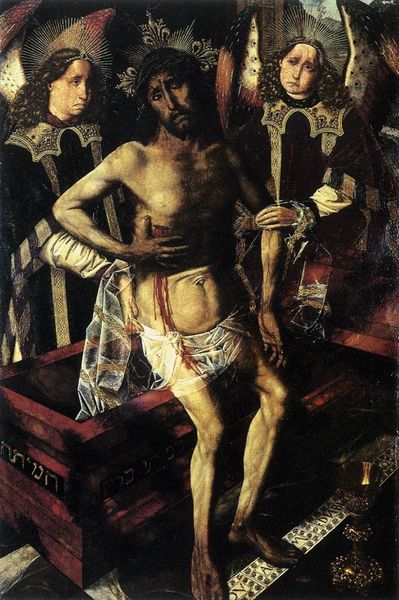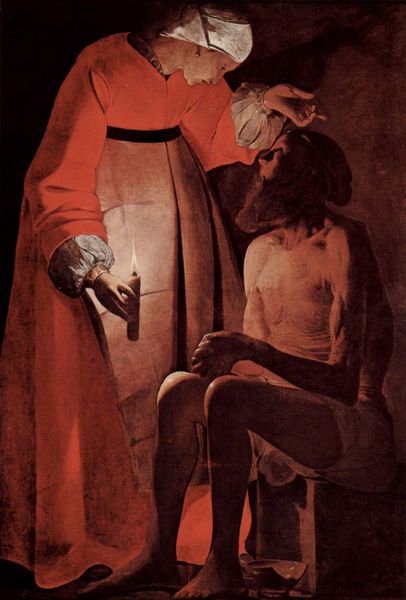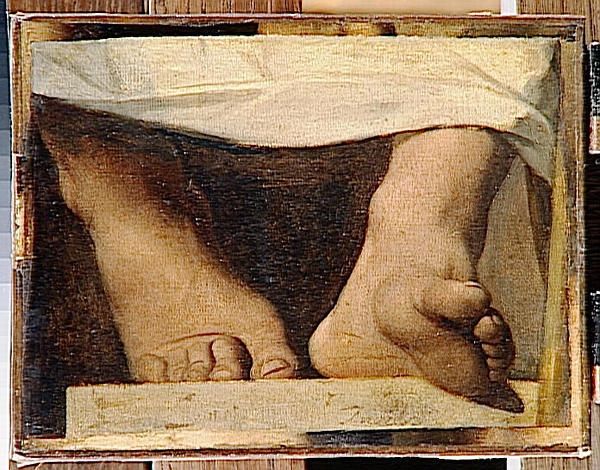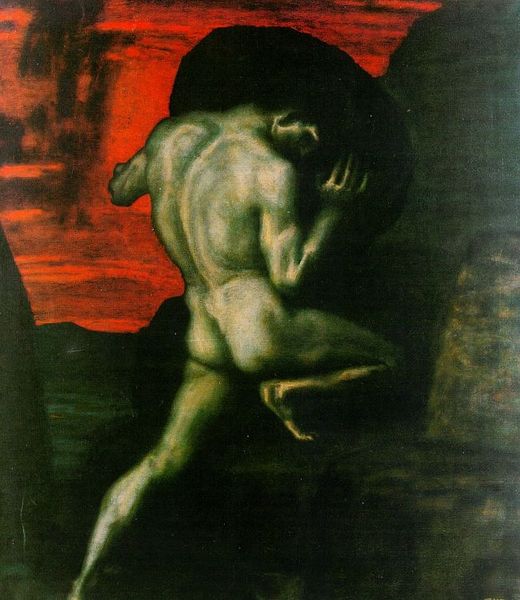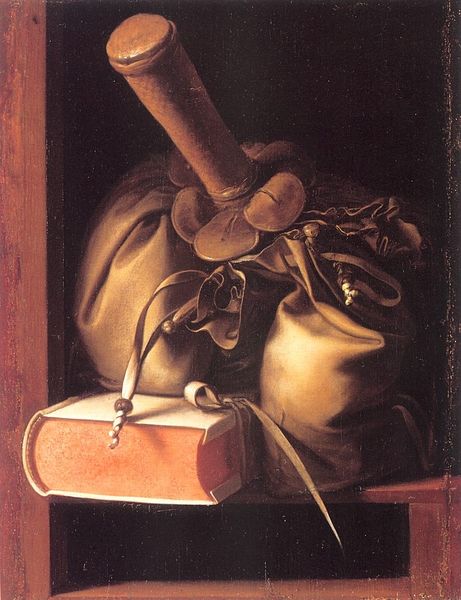
Copyright: Public domain
This image shows a detail from the Crucifixion Altarpiece, made by Matthias Grünewald, probably around 1512-1516. It is oil paint on wood, traditional materials handled with radical vision. Look closely. See the way the paint is manipulated to render the agonized flesh of Christ’s feet? Grünewald used thin glazes to build up the skin tones, layer upon layer. The level of detail is shocking: the texture of the torn skin, the pooling blood, and the rough-hewn timber of the cross, all rendered with painstaking care. This hyper-realism would have been technically demanding, requiring absolute mastery of the materials. This wasn’t just about showing skill, though. Grünewald was painting for a hospital, a place filled with suffering and disease. The altarpiece wasn’t meant to be beautiful; it was meant to be visceral. The artist transformed this traditional medium, oil paint, into a mirror of human pain and endurance. It makes you think: what does it mean to elevate craft to the level of high art, to find beauty in the grotesque?
Comments
No comments
Be the first to comment and join the conversation on the ultimate creative platform.
